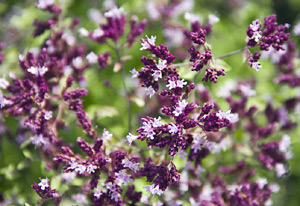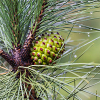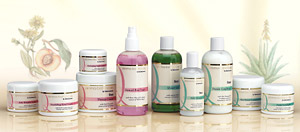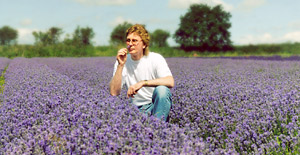Origanum Essential Oil Research
 Origanum herb (Origanum vulgare subsp. virens Hoffmanns. & Link, Bonnier & Layens) and its essential oil are widely used in the treatment of respiratory and cutaneous infections in traditional medicine. In order to establish a basis for its traditional employment, the antimicrobial activity of the essential oil of O. vulgare subsp. virens was evaluated against human fungal pathogens.
Origanum herb (Origanum vulgare subsp. virens Hoffmanns. & Link, Bonnier & Layens) and its essential oil are widely used in the treatment of respiratory and cutaneous infections in traditional medicine. In order to establish a basis for its traditional employment, the antimicrobial activity of the essential oil of O. vulgare subsp. virens was evaluated against human fungal pathogens.
Different oil samples were studied in order to elucidate the intraspecific chemical variability and its impact on the biological activity. Flowering aerial parts of three samples of Origanum vulgare subsp. virens were collected in different geographical locations and essential oils were isolated from air-dried plant material by hydrodistillation.
The oils were analyzed by gas chromatography (GC) and gas chromatography-mass spectrometry (GC-MS). Minimum inhibitory and lethal concentrations (MIC and MLC) were measured by broth macrodilution methods for the oils and their main constituents against human pathogenic fungi and the influence of the oils on the filamentation in Candida albicans was assayed.
The impact of the oil samples on cell metabolism and cell membrane integrity was studied by flow cytometry. Significant quantitative differences in chemical composition were found between the essential oil samples and, while the three samples generally displayed potent fungicidal activity, antifungal potencies varied and appeared to be intensified by increasing carvacrol contents.The inhibition of filamentation, on the other hand, may correlate more to γ-terpinene content.
The flow cytometry results have confirmed the occurrence of damage to the plasma membrane, although not necessarily as a direct effect of the oil on the membrane. The essential oil of Origanum vulgare subsp. virens is a broad-spectrum fungicide, thus justifying its potential for use in the treatment of superficial or mucosal fungal infections. The essential oil shows significant variability in chemical composition between samples, which, in turn, closely affects its biological activity.
Copyright © Vale-Silva LA, Silva MJ, Oliveira D, Goncalves MJ, Cavaleiro C, Salgueiro L, Pinto E. 2011






























